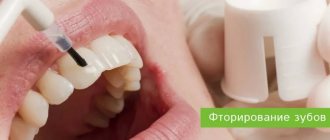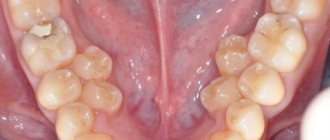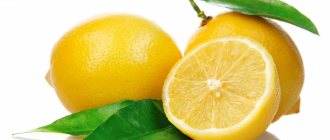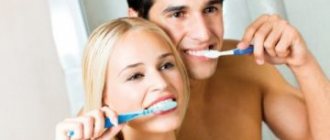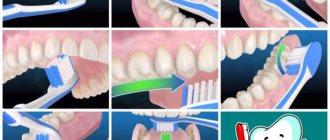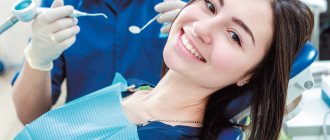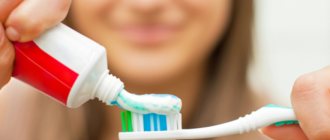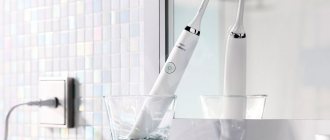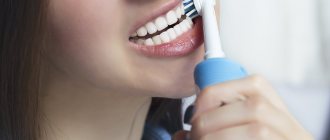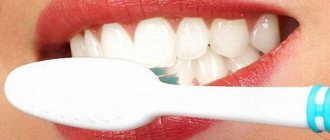Home / Food additives (E) / Stabilizers, emulsifiers (E-400 - E-599)
Back
Published: 01/13/2017
Reading time: 12 min
0
2853
When buying shampoo, toothpaste or dishwashing liquid, few people study their composition. But the fine print contains interesting information: the second in the list of ingredients (after water) is almost always a substance designated by the Latin letters SLS. The product is known as food additive E 487. This is what gives a thick foam and removes fat. At the same time, it has a harmful effect on the skin, mucous membranes of the eyes and oral cavity.
Long-term use may cause brain damage.
- The product's name
- Type of substance
- Properties
- Package
- Application Cosmetics industry
- Production of household chemicals
- Pharmaceuticals and medicine
The product's name
The officially accepted name of the additive is sodium lauryl sulfate. International synonym: Sodium Laurylsulfate.
Other names:
- E 487 (E–487) - number in the European codification of additives;
- sodium salt of lauryl sulfonic acid;
- sodium dodecyl sulfate, commonly found on drug packaging;
- sodium alkyl ethoxy sulfate;
- sodium sulfoethoxylate;
- sodium salt of fatty alcohol sulfoethoxylate;
- LSN;
- SLS.
Sodium lauryl sulfate on packaging of cosmetic and household products may be designated under the following trade names:
- Tainolin AS-95N;
- Texapon;
- Sulfa;
- Emal;
- Marlinat;
- Hansanol;
- Spolapon.
Where there is?
Toothpastes containing sodium lauryl sulfate include:
- ROCS – with chocolate and berry flavors.
- Blend-a-med.
- Colgate.
- "New pearls".
- "Forest Balsam"
- Aquafresh.
- Marvis.
Crest 3d white paste contains sodium lauryl sulfate. It is advisable not to constantly use products containing this component. There are effective products without this substance. Crest 3d white also contains polyphosphates, which loosen tartar, wash it out, and also remove the enamel itself. The product is abrasive.
Type of substance
Additive E 487 is an emulsifier, an anionic amphiphilic compound.
The substance significantly reduces the surface tension of aqueous solutions. This facilitates the formation of emulsions, promotes their stabilization, and prevents repeated separation of the colloidal system. When combined with water, the substance forms a stable foam that is not prone to settling. Sodium lauryl sulfate is a mixture of alkyl sulfuric acids. Contains predominantly sodium dodecyl sulfate (up to 85% of the total acids), so these two names are considered synonymous.
Emulsifier E 487 is a product of complex chemical synthesis. The process of obtaining the substance consists of sulfating lauryl alcohol with the strongest reagent - sulfuric acid monochloride. The resulting alkyl sulfates (esters of sulfuric acid) are neutralized with an aqueous-acetone solution of sodium carbonate, crystallized and dried.
The additive belongs to the group of synthetic substances.
Important! Some manufacturers position the substance as natural, obtained from coconut oil. This is not true. Lauryl alcohol is indeed found in some vegetable oils (palm, citrus, coconut), but on an industrial scale it is synthesized from ethylene.
Disguise
How are dangerous substances disguised? Manufacturers often distort the names of harmful components and replace them with others. Lauryl sulfate, which is obtained by refining petroleum, is often disguised as an analogue that is extracted from coconuts or coconut oil.
The label “Paraben Free” on packaging is not always true. Manufacturers often deceive customers by labeling them as methyl paraoxybenzoate. But the essence still remains the same: the components are parabens.
Properties
| Index | Standard values |
| Color | white, sometimes with a yellowish tint; yellow-brown in aqueous solution |
| Compound | empirical formula C12H25SO4Na |
| Appearance | viscous transparent liquid |
| Smell | characteristic |
| Solubility | good in water to form an opalescent solution; average in alcohols; insoluble in ether, benzene |
| Main substance content | at least 70% |
| Taste | absent |
| Density | 1.01 g/cm³ |
| Other | heat resistant; stable in acidic and alkaline environments; When interacting with water, it forms a stable foam |
Need for cleaning
The oral cavity is considered one of the most exposed areas of the body to the environment. There are a lot of bacteria there. Teeth are designed for mechanical processing of food, that is, chewing foods whose remains get stuck between the teeth. This provides a favorable environment for microorganisms. When a person has not brushed his teeth for a long time, bacteria multiply rapidly and a soft plaque appears.
This plaque negatively affects teeth because it releases acid, which destroys tooth enamel. If you do not clean it off, caries gradually appears. Plaque also leads to the disruption of the natural barrier to infections in the mouth. It also leads to halitosis – bad breath and the formation of tartar. By regularly cleaning teeth from soft plaque, microorganisms will not have a chance to cause caries and other problems.
Application
The use of sodium lauryl sulfate in food production is prohibited in almost all countries. Emulsifier E 487 is excluded from SanPiN, the national standard for food additives. Mentioned in the Codex Alimentarius without indicating its status.
The cheap surfactant has found wide application in other fields of activity.
Cosmetics industry
Additive E 487 has high foaming, cleaning, and antibactericidal properties.
The emulsifier is included in:
- almost all shampoos, including special anti-dandruff shampoos (for example, Head & Shoulders). The paradox is that sodium lauryl sulfate greatly degreases the scalp, which leads to seborrheic dermatitis;
- toothpastes to improve texture and create long-lasting foam. Sodium lauryl sulfate has a whitening effect. It is the active ingredient in most tooth whitening toothpastes;
- liquid soap, shower gels, cleansing foams;
- shaving products (increases foaming).
Production of household chemicals
Sodium lauryl sulfate is active against pathogenic microorganisms, including E. coli, salmonella, molds, and staphylococci. This property made it possible to use the E 487 additive as a disinfectant for cleaning floors and walls in medical institutions and food industry enterprises. Under the name "Maxi-Dez M" the substance is used in dairy plants to treat flasks, equipment parts, and starter containers.
Additive E 487 has strong cleaning and wetting properties.
The main substance is included in the composition of gels, foams, pastes, liquids for various purposes:
- dishwashing detergents (for example “Fairy”);
- car shampoos;
- degreasing liquids for cleaning automobile engines;
- products for washing clothes, cleaning floors, household appliances.
Pharmaceuticals and medicine
The most popular use of the E 487 supplement is clinical research.
The substance is used as a diagnostic reagent for skin irritation. Determine empirically:
- percentage of toxic level of the additive;
- the effectiveness of various healing agents after skin irritation with sodium lauryl sulfate;
- duration of skin healing.
An emulsifier as an excipient is used in the production of some antibiotics and antifungal drugs (forcan, fluconazole (Diflucan), hemomycin and others). The additive accelerates the dissolution of powders when independently preparing a suspension or infusion solution, and enhances the properties of the active substance.
Included in the Calcemin Advance vitamin complex and Coronal tablets (prescribed for heart disease) as an auxiliary agent.
What is sodium lauryl sulfate?
Lauryl sulfate is a salt of lauryl sulfuric acid. It is an active substance used industrially for the manufacture of the following products:
- machine oil;
- cleaners;
- toothpastes, shampoos;
- steel.
In its pure form, lauryl sulfate is produced in the form of a white powder. It is flammable and soluble in water. Color – from yellow to brown. If it is added to water, it becomes foamy. When the substance decomposes, no toxic products are formed.
Additional Information! The substance is used as a detergent; it has surface-active properties. During its use, foaming and cleansing occurs.
Benefits and harms
Sodium lauryl sulfate is an effective and inexpensive detergent with increased foaming. It is safe for the environment, as it has a high biodegradability rate (more than 90%). This is where the advantages of the product end.
The substance can cause irreparable harm to human health. The product is poorly excreted from the body.
The high degreasing qualities of the E 487 additive acquire a negative connotation when it comes to cosmetic products for skin and hair care.
In shampoos, soaps, shaving foam and similar products, sodium lauryl sulfate can cause:
- dryness, cracking and flaking of the skin;
- the appearance of dandruff;
- hair loss;
- itching, skin rashes (the additive is one of the strongest allergens!);
- pain, inflammation of the mucous membrane upon contact with the eyes (especially dangerous for children).
Sodium lauryl sulfate in toothpastes is especially dangerous . The additive has a dehydrating effect. Once in the oral cavity, it irritates the mucous membrane and causes the formation of ulcers (stomatitis).
A number of studies have revealed the ability of the substance to penetrate through the mucous membrane and skin into the cells of the body and accumulate there. This can provoke a malfunction of the immune system, causing various damage to the liver, heart, respiratory system, and brain.
The additive causes significant harm with prolonged use. Short-term exposure to the skin (for example, when cleansing the face, washing dishes) will have a serious negative effect only if you are individually intolerant.
Tests for carcinogenic and mutogenic properties were carried out superficially, once. They did not identify any dangerous qualities of the additive.
According to international standards, the concentration of the E 487 additive in cosmetics should not exceed 1%.
What are parabens in toothpastes?
Parabens are substances added to increase shelf life. Thanks to them, the composition is stored for many years without spoiling the product.
In addition to serving as a preservative, parabens are intended to do the following:
- destruction of bacteria that cause infection on the gums and teeth;
- suppression of the growth of fungal microflora, preventing stomatitis.
Parabens have the ability to accumulate in tissues and gradually cause toxic effects. In some patients they lead to allergic reactions, which are harmful to health.
Main manufacturers
Domestic chemical enterprises do not produce the E 487 additive. The product is supplied by foreign companies:
- ENASPOL GmbH (Germany, Czech Republic);
- Shijiazhuang Leveling Import and Export Co., Ltd.(China);
- Shandong ThFine Chemical Co., Ltd.(China);
- GULF EXPORTS (India);
- Cognis (Germany), the company is part of the BASF concern.
Most often, the food additive E481 is used in toaster bread.
What is proiponic acid and where is it used? Find out about it here.
Annatto is a safe food coloring. You will learn more information about it from this article.
Whitening components
Why are they needed? Whitening pastes are abrasive and enzymatic. Their task is to return the enamel to its natural shade (not necessarily white), removing stains from tea, coffee and tobacco. The difference is in how they act on plaque.
Abrasive pastes “scrub” enamel using special substances. Previously, crushed oyster shells and bull hooves were used for this purpose. Today - silicon dioxide, calcium carbonate, aluminum oxides. They are in every toothpaste. There are much more of them in abrasive ones than in regular ones.
To distinguish between pastes based on “hardness,” the American Dental Association (ADA) introduced an abrasiveness index—RDA. For ordinary ones it is less than 100, for abrasive pastes it is from 101 to 250.
Enzyme pastes do not scrub the enamel, but break down plaque with enzymes. These are, for example, papain, bromelain, polydone and pyrophosphates. These pastes have a low RDA value - up to 60.
Rating of Western toothpastes by abrasiveness (English)
What does the advertisement say? Whitening toothpaste will remove stains from the surface of your teeth, leaving them snow-white.
What the research says. Brushing your teeth with abrasive toothpastes more than once a week is harmful to your enamel.
Enzyme and abrasive pastes are equally effective, but enzyme pastes do not scratch enamel.
How to be. Anyone who cares about hygiene and doesn’t smoke or drink coffee will most likely not notice the whitening effect.
If your teeth are naturally yellowish in color, only a professional procedure in your doctor's office will provide you with a snow-white smile. The specialist will take into account all the indications and contraindications, and will also select a suitable whitening system and tell you how to care for lightened enamel.
Lovers of coffee, wine and tobacco can brush their teeth with a toothpaste containing enzymes on a regular basis.
